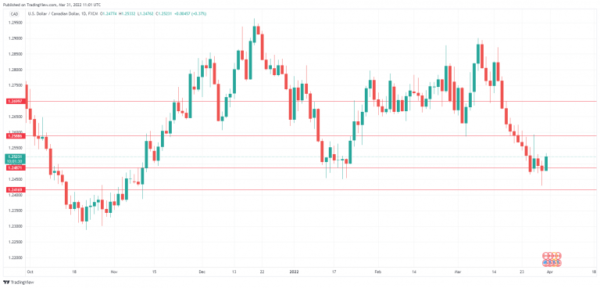The Canadian dollar has looked sharp over the past two weeks, posting gains in 11 out of 12 days. On Wednesday, USD/CAD fell to 1.2429, its lowest level since November 2021.
What has been especially impressive about the Canadian dollar rally is that it has taken place in turbulent market conditions, where risk apprehension has been volatile. The main driver of movement in the markets has been the Russia-Ukraine war, which has killed thousands, displaced millions and ruptured relations between East and West, perhaps for years to come.
The risk-sensitive Canadian dollar has managed to gain ground in recent weeks, largely due to the surge in commodities, with the Ukraine crisis sending the price of oil and other commodities even higher. Canada is a major exporter of oil and other commodities, and the demand for these items has boosted the economy and buoyed the Canadian dollar.
Canada is likely in the midst of a sixth wave of Covid, as there are reports of an increase in Covid cases. This will likely result in health restrictions being ramped up after they were recently eased. If the restrictions continue for an extended period, economic growth for Q2 may have to be revised downwards. Later today, Canada releases GDP for January, with a forecast of 0.2% MoM, compared to the 0.0% reading in December.
ADP employment report dips, NFP next
This week’s highlight is US nonfarm payrolls, which will be released on Friday. The ADP report came in at 455 thousand, down slightly from the previous release, which was revised upwards to 486 thousand. Although the ADP is not considered a reliable indicator for the official NFP, it has nonetheless raised expectations that Friday’s NFP will be solid, with the consensus estimate at 490 thousand.
USD/CAD Technical
- USD/CAD faces resistance at 1.2588 and 1.2699
- There is support at 1.2487 and 1.2416














